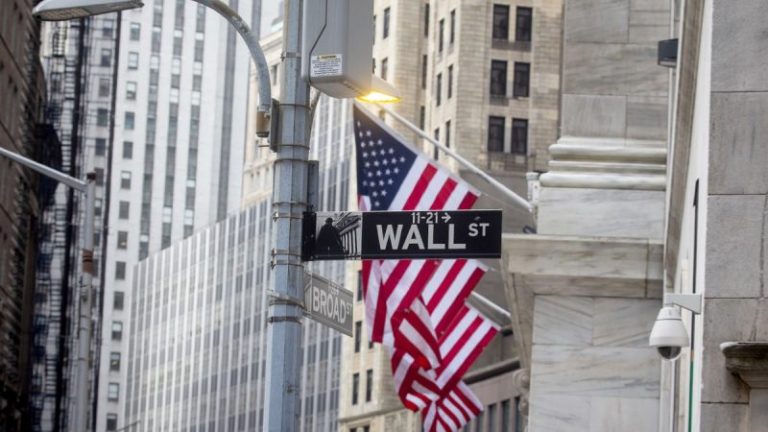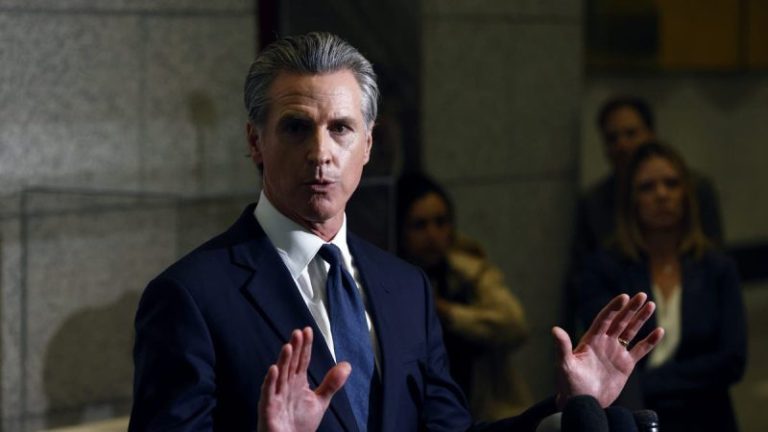Standard Uranium Ltd. (TSXV: STND,OTC:STTDF) (OTCQB: STTDF) (FSE: 9SU0) (‘Standard Uranium’ or the ‘Company’) announces the conclusion, effective December 11, 2025, of an arm’s length property option agreement (the ‘Agreement’) with Aero Energy Ltd. (‘Aero’) dated October 20, 2023, that had allowed Aero to earn up to 100% interest in the Sun Dog Project (‘Sun Dog’, or the ‘Project’). Following the conclusion of the Agreement, full and unencumbered ownership of the Project has been returned to the Company. Standard Uranium is currently working on plans to advance exploration on Sun Dog, building upon recent drilling and geophysical programs in 2024 and 2025.
Sun Dog covers an area of 48,443 acres (19,604 ha) across nine mineral claims and is located 15 km Southeast of Uranium City on the northern margin of the Athabasca Basin (Figure 1). It hosts the historical Gunnar Uranium Mine, discovered in 1952, which doubled Canada’s uranium production and became the largest uranium producer globally in 1956. The Gunnar Mine produced approximately 18M lbs of U3O8 between 1953 and 19811,2.
Jon Bey, CEO & Director of Standard Uranium, commented, ‘Sun Dog is a fantastic project that continues to garner a great deal of interest from multiple companies. We are excited to have the Sun Dog project returned to our portfolio and confident that we will have another joint venture partner funding further exploration in the next year. I would also like to wish the team at Aero Energy future success as they focus their sites on their other uranium projects in Canada and the USA. They were a great partner to work with the past two years.’
Figure 1. Overview of the Sun Dog Project highlighting drill target areas, historical high-grade* uranium occurrences3, and EM-conductors4.
To view an enhanced version of this graphic, please visit:
https://images.newsfilecorp.com/files/10633/277772_82df2fcd64d3c957_001full.jpg
Sun Dog Highlights
-
History of Production: The project hosts the historical Gunnar Mine which produced 18M pounds of U3O8 between 1953 and 1981 and was formerly the world’s largest uranium producer1,2.
-
Uranium Above and Below the Unconformity: Numerous recent and historical high-grade* uranium assays from outcrop samples across the Project range from 0.01% to 17.4% U3O83,4. These showings occur in both basement rocks below the Unconformity and perched within Athabasca sandstones above the Unconformity thus confirming the presence of unconformity-related high-grade uranium on the Sun Dog Project.
-
Verified Targets: Stacked graphitic structural zones associated with uranium mineralization and prospective hydrothermal alteration have been intersected in multiple target areas during modern drill programs. The drill program results to date confirm a favorable geological environment for fluid movement and uranium deposition on the Project.
Modern Exploration
Recent exploration efforts by Standard Uranium have focused on multiple target areas across the Project, testing down-dip extensions of structures hosting uranium at surface with the aim of discovering high-grade unconformity mineralization and basement ‘roots’ of the mineralizing systems underlying the Athabasca sandstones.
Prospecting & Surface Exploration
Prospecting in 2020 led to the discovery of a new high-grade uranium showing named the Haven discovery and several zones of visible uranium mineralization at surface that returned uranium assay results of 3.58% U3O8, 1.7% U3O8, and 0.7% U3O8.5
In the summer of 2022, Standard Uranium executed a field mapping and prospecting program to expand upon the results of the 2020 prospecting program. Handheld RS-120 and RS-125 scintillometers were used to track radioactivity with more than 80 new mineralized boulder and bedrock locations discovered on Johnston and Stewart islands.
In 2024, occurrences of strong to intense radioactivity in outcropping basement rocks were identified at surface while prospecting at the Wishbone and Spring-Dome target areas, returning highly anomalous assays ranging from 0.02% to 13.0% U3O8.6
Additionally, the analytical results revealed a correlation between uranium and gold, while boron and other pathfinder elements highlighted the potential for a robust alteration footprint associated with uranium mineralization. Surficial grab samples from faults and veins cutting sandstone outcrop returned high concentrations of dravite (up to 75%), a uranium pathfinder mineral commonly associated with uranium-fertile systems.
Geophysical Surveys
In the winter of 2022, MWH Geo-Surveys Ltd. carried out a ground gravity survey and UAV-borne magnetic surveys in the areas of Johnston and Stewart islands on behalf of Standard Uranium. The gravity survey consisted of 3,388 unique gravity measurement stations with a station spacing of 50 to 100 m. The survey identified several variations in residual gravity and outlined multiple gravity low target areas on and around Stewart and Johnston islands.
An airborne VTEMTM Plus survey was completed in 2024 to pinpoint graphitic rocks (conductors) favourable for hosting significant concentrations of uranium. This modern electromagnetic (‘EM’) survey improved upon historical surveys which have identified at least 40 km of combined conductor strike length.
In 2025, MWH Geo-Surveys Ltd. completed high-resolution ground gravity surveys along known conductive exploration trends across the Wishbone, McNie, and Armbruster South target areas, filling in the gaps between the previous 2022 gravity grids (Figure 2). These surveys have identified numerous density-low bullseye anomalies representing potential zones of hydrothermal alteration or structural disruption which are commonly associated with uranium mineralization events.
Figure 2. 2025 ground gravity survey areas covering the Armbruster South, Wishbone, and McNie EM conductor trends. Density-low anomalies representing potential alteration zones are highlighted by cool colours on the inverted gravity grids.
To view an enhanced version of this graphic, please visit:
https://images.newsfilecorp.com/files/10633/277772_82df2fcd64d3c957_002full.jpg
Drill Programs
Standard Uranium carried out two drill programs on the Project during the winters of 2022 and 2023, in addition to operating a program in 2024 funded by Aero. In total, 4,062 m of diamond drilling has been completed by the Company across 21 drill holes on the Project.
Historical exploration efforts primarily focused on the ‘Beaverlodge-style’ deposit model, targeting lower-grade, fault-hosted mineralization visible at the surface. This approach did not target, and would not have been effective for, the high-grade ‘Unconformity-related’ basement-hosted deposits associated with graphitic rocks more recently discovered near the Athabasca Basin’s edge (e.g. Arrow, Triple R).
Recent diamond drill programs have been successful in identifying key geological characteristics prospective for significant uranium mineralizing systems on the Project, which in turn will aid in planning and prioritization of additional exploration targets for follow-up drill programs.
Drilling highlights include3,8:
-
Widespread hydrothermal alteration zones containing illite-rich and dravitic clays and abundant iron-oxide minerals intersected in multiple drill holes, indicating a robust fluid system with prospective chemistry for uranium.
-
Significant structural influence evidenced to control high-grade uranium mineralization and anomalous radioactivity in drill holes.
-
Reactivated graphitic shear zones & quartz-hematite breccias intersected over 10s of metres in several drill holes indicate ideal structural regime providing the plumbing system for uranium mobilization.
-
Favorable geochemistry returned in multiple drill holes, including prospective clay spectroscopy results (dravite), elevated pathfinder elements, and anomalous uranium correlated to lead isotope ratios which may be used as an additional exploration vector.
-
Uranium mineralization confirmed by anomalous uranium assays was intersected in multiple drill holes, coinciding with prospective structure and favorable alteration.
Qualified Person Statement
The scientific and technical information contained in this news release has been reviewed, verified, and approved by Sean Hillacre, P.Geo., President and VP Exploration of the Company and a ‘qualified person’ as defined in NI 43-101 – Standards of Disclosure for Mineral Projects.
Samples collected for analysis by the Company were sent to SRC Geoanalytical Laboratories in Saskatoon, Saskatchewan for preparation, processing, and ICP-MS multi-element analysis using total and partial digestion, gold by fire assay, and boron by fusion. Basement samples were tested with ICP-MS2 uranium multi-element exploration package plus boron. All basement samples marked as radioactive upon arrival to the lab were also analyzed using the U3O8 assay (reported in wt %). Basement rock split interval samples range from 0.1 to 0.5 m. SRC is an ISO/IEC 17025:2005 and Standards Council of Canada certified analytical laboratory. Blanks, standard reference materials, and repeats were inserted into the sample stream at regular intervals in accordance with Standard Uranium’s quality assurance/quality control (QA/QC) protocols. All samples passed internal QA/QC protocols, and the results presented in this release are deemed complete, reliable, and repeatable.
Samples containing clay alteration were sent to Rekasa Rocks Inc. in Saskatoon, Saskatchewan to be analyzed by Short Wavelength Infrared Reflectance (‘SWIR‘) via a Portable Infrared Mineral Analyzer (‘PIMA‘) to verify clay species. All depth measurements reported are down-hole measurements and true thicknesses are yet to be determined.
Historical data disclosed in this news release relating to sampling results from previous operators are historical in nature. Neither the Company nor a qualified person has yet verified this data and therefore investors should not place undue reliance on such data. The Company’s future exploration work may include verification of the data. The Company considers historical results to be relevant as an exploration guide and to assess the mineralization as well as economic potential of exploration projects. Any historical grab samples disclosed are selected samples and may not represent true underlying mineralization.
Natural gamma radiation from rocks reported in this news release was measured in counts per second (‘cps’) using a handheld RS-125 super-spectrometer and RS-120 super-scintillometer. Readers are cautioned that scintillometer readings are not uniformly or directly related to uranium grades of the rock sample measured and should be treated only as a preliminary indication of the presence of radioactive minerals. The RS-125 and RS-120 units supplied by Radiation Solutions Inc. (‘RSI‘) have been calibrated on specially designed Test Pads by RSI. Standard Uranium maintains an internal QA/QC procedure for calibration and calculation of drift in radioactivity readings through three test pads containing known concentrations of radioactive minerals. Internal test pad radioactivity readings are known and regularly compared to readings measured by the handheld scintillometers for QA/QC purposes.
References
- Gunnar Uranium Mine: From Cold War Darling to Ghost Town, L. Schramm, Saskatchewan Research Council, 2018.
- Geology and Genesis of Major World Hardrock Uranium Deposits, United States Geological Survey, Open-File Report 81-166, 1981.
- Technical Report on the Sun Dog Property – Northwestern Saskatchewan, Canada, Effective date June 30, 2023
- Information obtained from Saskatchewan Mineral Deposit Index and historical report from Uranium City Resources, 2007
*The Company considers uranium mineralization with concentrations greater than 1.0 wt% U3O8 to be ‘high-grade’.
**The Company considers radioactivity readings greater than 65,535 counts per second (cps) on a handheld RS-125 Super-Spectrometer to be ‘off-scale’.
***The Company considers radioactivity readings greater than 300 counts per second (cps) on a handheld RS-125 Super-Spectrometer to be ‘anomalous’.
About Standard Uranium (TSXV: STND,OTC:STTDF)
We find the fuel to power a clean energy future
Standard Uranium is a uranium exploration company and emerging project generator poised for discovery in the world’s richest uranium district. The Company holds interest in over 235,435 acres (95,277 hectares) in the world-class Athabasca Basin in Saskatchewan, Canada. Since its establishment, Standard Uranium has focused on the identification, acquisition, and exploration of Athabasca-style uranium targets with a view to discovery and future development.
Standard Uranium’s Davidson River Project, in the southwest part of the Athabasca Basin, Saskatchewan, comprises ten mineral claims over 30,737 hectares. Davidson River is highly prospective for basement-hosted uranium deposits due to its location along trend from recent high-grade uranium discoveries. However, owing to the large project size with multiple targets, it remains broadly under-tested by drilling. Recent intersections of wide, structurally deformed and strongly altered shear zones provide significant confidence in the exploration model and future success is expected.
Standard Uranium’s eastern Athabasca projects comprise over 43,185 hectares of prospective land holdings. The eastern basin projects are highly prospective for unconformity related and/or basement hosted uranium deposits based on historical uranium occurrences, recently identified geophysical anomalies, and location along trend from several high-grade uranium discoveries.
Standard Uranium’s Sun Dog project, in the northwest part of the Athabasca Basin, Saskatchewan, is comprised of nine mineral claims over 19,603 hectares. The Sun Dog project is highly prospective for basement and unconformity hosted uranium deposits yet remains largely untested by sufficient drilling despite its location proximal to uranium discoveries in the area.
For further information contact:
Jon Bey, Chief Executive Officer, and Chairman
Suite 3123, 595 Burrard Street
Vancouver, British Columbia, V7X 1J1
Tel: 1 (306) 850-6699
E-mail: info@standarduranium.ca
Cautionary Statement Regarding Forward-Looking Statements
This news release contains ‘forward-looking statements’ or ‘forward-looking information’ (collectively, ‘forward-looking statements’) within the meaning of applicable securities legislation. All statements, other than statements of historical fact, are forward-looking statements and are based on expectations, estimates and projections as of the date of this news release. Forward-looking statements include, but are not limited to, statements regarding: the timing and content of upcoming work programs; geological interpretations; timing of the Company’s exploration programs; and estimates of market conditions.
Forward-looking statements are subject to a variety of known and unknown risks, uncertainties and other factors that could cause actual events or results to differ from those expressed or implied by forward-looking statements contained herein. There can be no assurance that such statements will prove to be accurate, as actual results and future events could differ materially from those anticipated in such statements. Certain important factors that could cause actual results, performance or achievements to differ materially from those in the forward-looking statements are highlighted in the ‘Risks and Uncertainties’ in the Company’s management discussion and analysis for the fiscal year ended April 30, 2025.
Forward-looking statements are based upon a number of estimates and assumptions that, while considered reasonable by the Company at this time, are inherently subject to significant business, economic and competitive uncertainties and contingencies that may cause the Company’s actual financial results, performance, or achievements to be materially different from those expressed or implied herein. Some of the material factors or assumptions used to develop forward-looking statements include, without limitation: that the transaction with the Optionee will proceed as planned; the future price of uranium; anticipated costs and the Company’s ability to raise additional capital if and when necessary; volatility in the market price of the Company’s securities; future sales of the Company’s securities; the Company’s ability to carry on exploration and development activities; the success of exploration, development and operations activities; the timing and results of drilling programs; the discovery of mineral resources on the Company’s mineral properties; the costs of operating and exploration expenditures; the presence of laws and regulations that may impose restrictions on mining; employee relations; relationships with and claims by local communities and indigenous populations; availability of increasing costs associated with mining inputs and labour; the speculative nature of mineral exploration and development (including the risks of obtaining necessary licenses, permits and approvals from government authorities); uncertainties related to title to mineral properties; assessments by taxation authorities; fluctuations in general macroeconomic conditions.
The forward-looking statements contained in this news release are expressly qualified by this cautionary statement. Any forward-looking statements and the assumptions made with respect thereto are made as of the date of this news release and, accordingly, are subject to change after such date. The Company disclaims any obligation to update any forward-looking statements, whether as a result of new information, future events or otherwise, except as may be required by applicable securities laws. There can be no assurance that forward-looking statements will prove to be accurate, as actual results and future events could differ materially from those anticipated in such statements. Accordingly, readers should not place undue reliance on forward-looking statements.
Neither the TSX-V nor its Regulation Services Provider (as that term is defined in the policies of the TSX-V) accepts responsibility for the adequacy or accuracy of this release.
To view the source version of this press release, please visit https://www.newsfilecorp.com/release/277772










